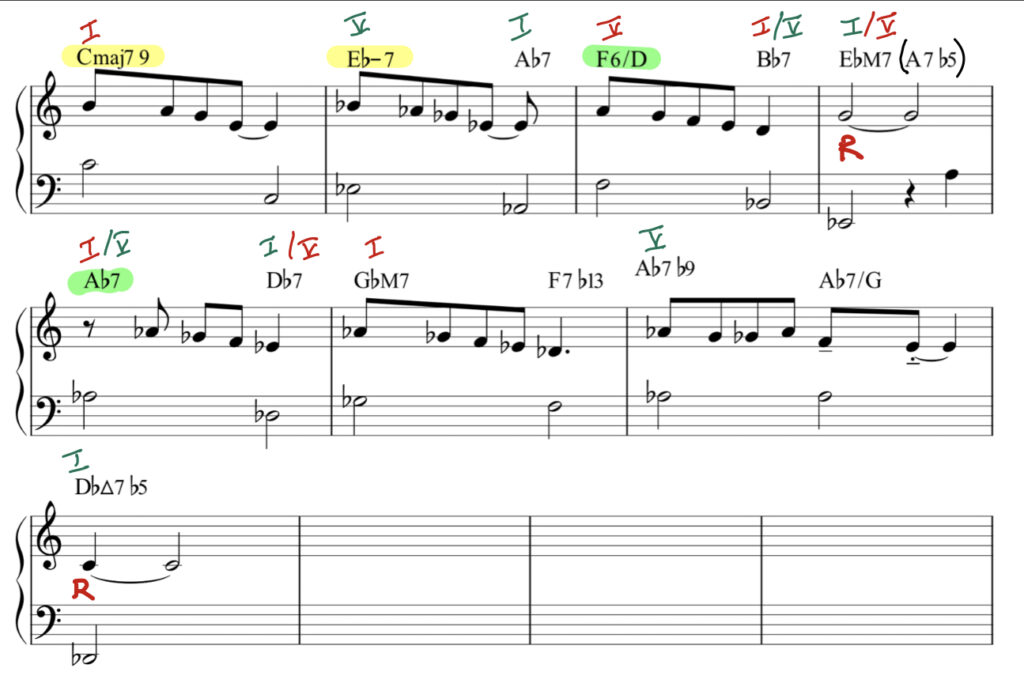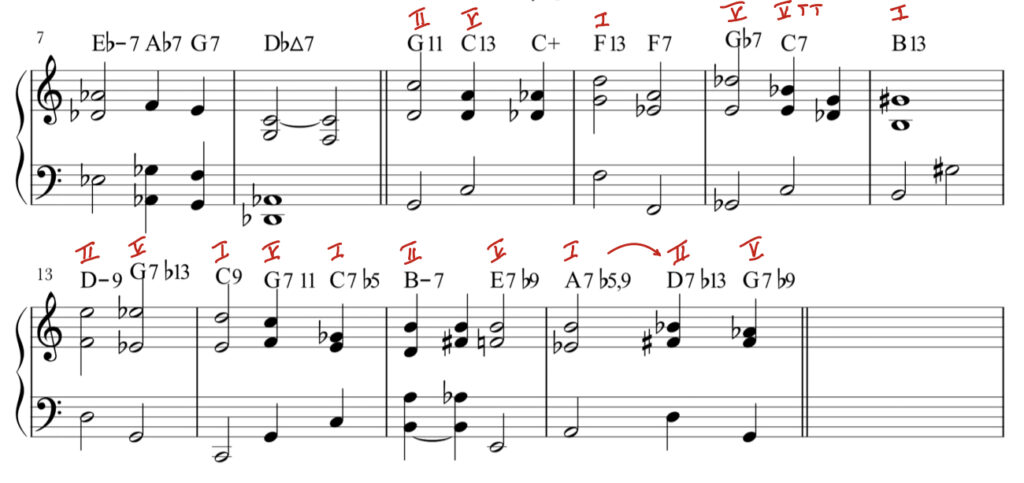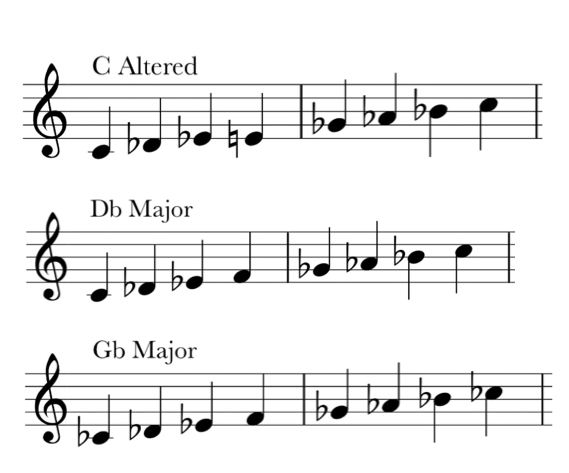Thelonious Monk - 1956
Thelonious Monk’s ‘Pannonica’ is an example of how motifs, familiar changes and “blue notes” can create Traceable Movement that hold together “Advanced Form” Jazz. ‘Pannonica’ first appeared on “Brilliant Corners” in 1956 but we will focus on the 1959 recording on “Thelonious Alone in San Francisco”.


As we discussed in the section on “Advanced Forms” (Link), when a composer starts moving away from strict “Destionational Harmony” other forms of Traceable Movement are necessary to give the piece a sense of Aural Logic. Monk brilliantly incorporates three different kinds of traceable movement in the A-section of “Pannonica’.
The first device is a four note motif encompassing a Perfect Fifth. The motif is repeated on different notes in bars 1, 2, 3 and 6.
The second type of glue holding the piece together is the familiar V-I chord progression. Some of the chains just jump from one to another while others shift chord functions where the I chord becomes a V chord or visa versa (Example 1).
The other trick is moving the motif by a minor 3rd – from ‘c’ to ‘e flat’ and from ‘f’ to ‘a flat’ (highlights). This gives the piece a bluesy feel because the second motif hits the blue notes of the first (b3, b5, b6 and b7). Note: the Dm7 in bar three is a “Sister Chord” to F.
The ‘R’ in bar 4 and 8 are resting points making it feel like these are Tonal Centres of Eb and Db.

The B-section is a little more traditional but still shifts Tonal Centres from F to B to C to A (Example 2).

Preparing an improvisation for ‘Pannonica’ is a challenge. Think about how blue notes discussed above can help give your solo continuity. You may want to play around with the scales in Example 3. Notice how they share many common notes.
Steve Lacy’s rendition (Link) offers some creative options.

